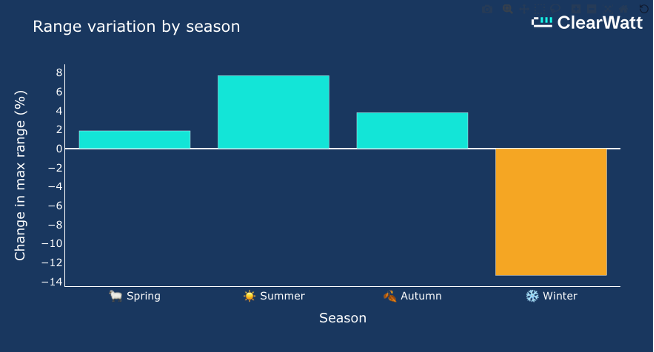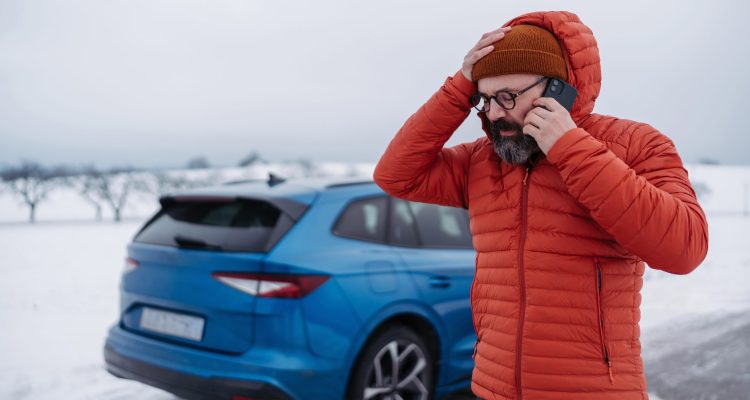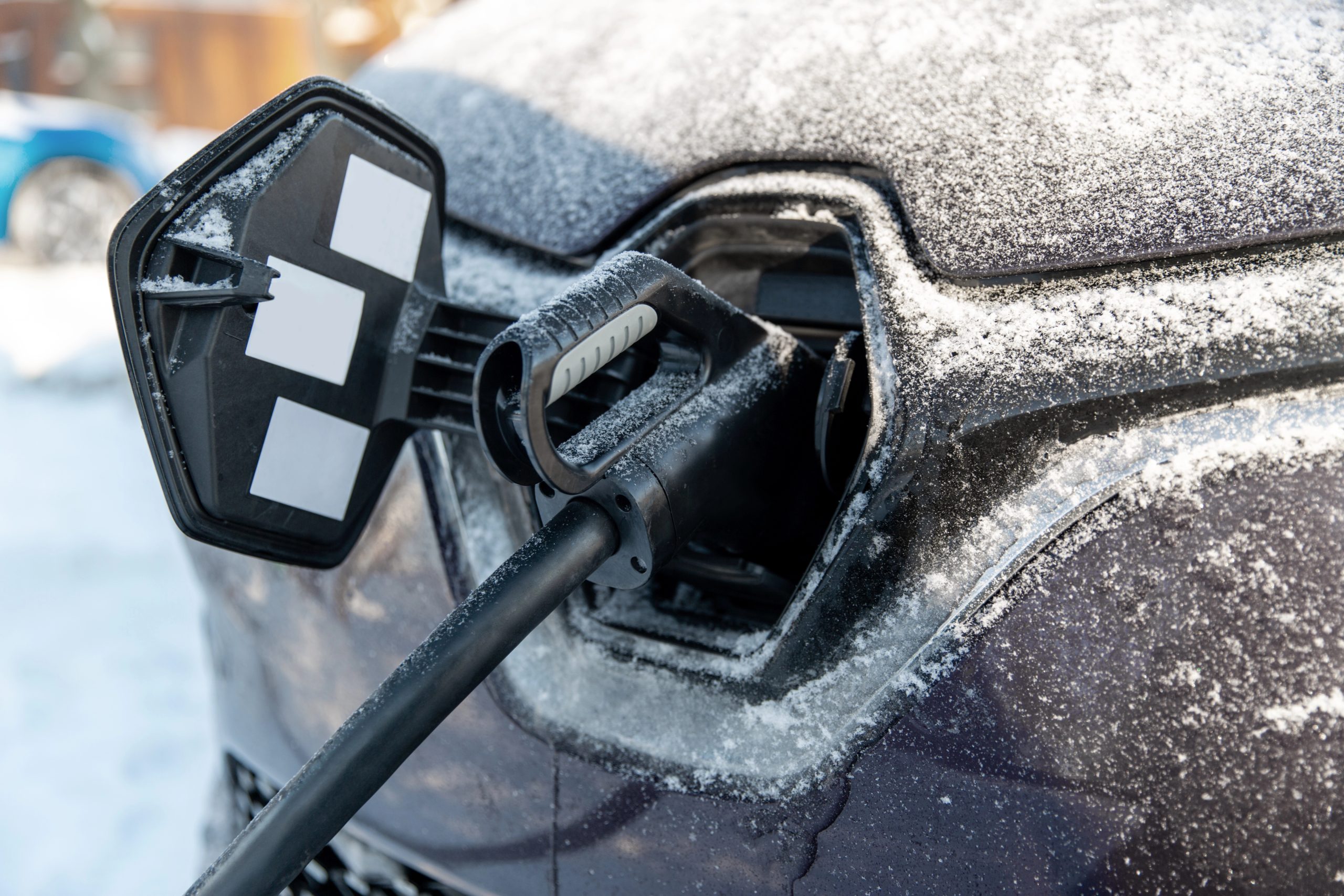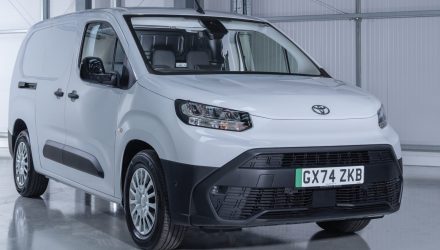EV battery testing and analytics company ClearWatt reveals the biggest factors in lower winter EV range, and the models that lose least range in colder temperatures.
An analysis of ClearWatt battery health testing data across thousands of EVs has revealed the dramatic impact that low temperatures can have on range and the stark differences in this fall by model.
 The overall picture is a near perfect correlation between temperature and range, with higher temperatures almost always resulting in longer range (up to 30oC), but this can vary significantly due to battery type, the presence of a heat pump and other factors.
The overall picture is a near perfect correlation between temperature and range, with higher temperatures almost always resulting in longer range (up to 30oC), but this can vary significantly due to battery type, the presence of a heat pump and other factors.
While the average drop in range between summer and winter for the EVs in ClearWatt’s database comes in at around 22%, some models lost as much as 40% of their range in winter. There were, however, some models which performed remarkably well, the Skoda Enyaq iV lost just 5% of its range between summer and winter. Tesla’s in general also perform well in the colder temperatures.
What to look out for when buying an EV
When looking to minimise the range loss in your EV, there are a few things prospective buyers can look out for, whether for new or used vehicles. The first and most important is to check whether the vehicle has a heat pump; newer models are more likely to be fitted with one but they are present in many older models too and make a big difference in range loss.
Battery chemistry can also make a big difference, with NMC (Nickel Manganese Cobalt) batteries gaining a 45% boost to range at 30oC, while LFP (Lithium Iron Phosphate) gain just 26%, this is despite the two types of battery having similar ranges at 0oC.
Extending your EV’s range
For those already driving an EV that are worried about the impact winter temperatures will have, there are a few tips to help get the most out of the battery.
- Heat the driver and not the entire cabin.
- Pre-condition the cabin and battery where possible – this means energy from the grid is in effect used to heat the vehicle rather than energy directly from the car’s battery.
- Use controlled and smooth acceleration and deceleration when driving.
- When cruising on the motorway, aim to cruise at around 60 mph.
Patrick Cresswell, Co-Founder and Managing Director of ClearWatt commented: “Summer is a great time for EV driving, with ranges receiving a boost and a plethora of scenic charging spots available. It is important, however, to understand the impact the colder temperatures of winter will have on your vehicle, although it’s certainly not all doom and gloom. By preparing properly you can minimise the loss of range that is, to a certain extent, inevitable.
Another thing drivers should be looking at is the presence of heat pumps and battery chemistry, especially when considering a used EV. This is why we set up ClearWatt, to help give buyers confidence in the vehicles that they are purchasing. Our battery health test gives drivers a precise real-world range and battery health grade for complete peace of mind when it comes to how far your EV can really go during the winter months.”







